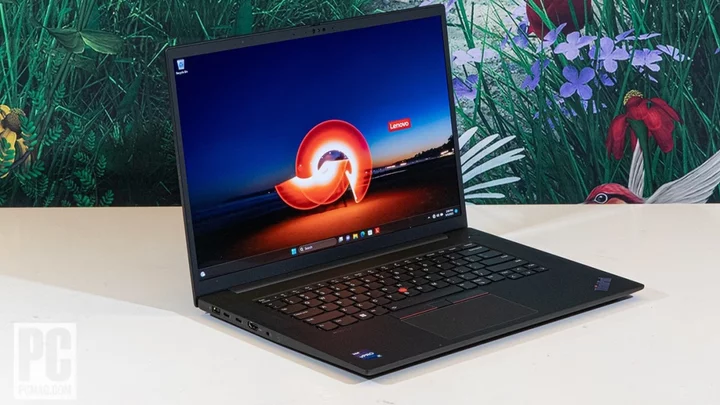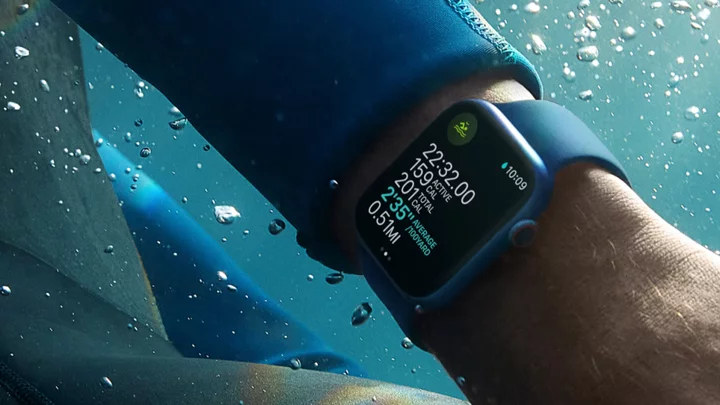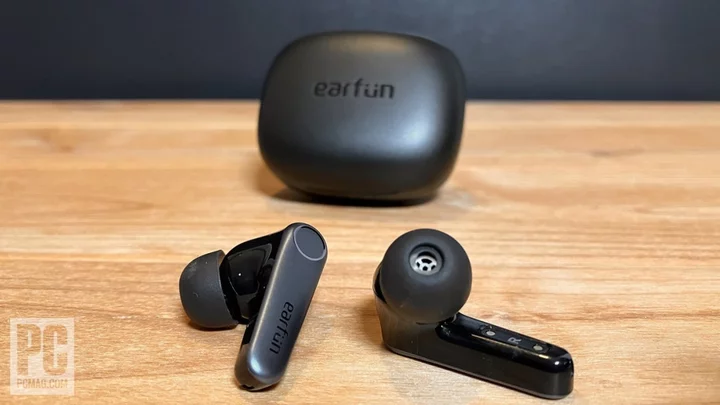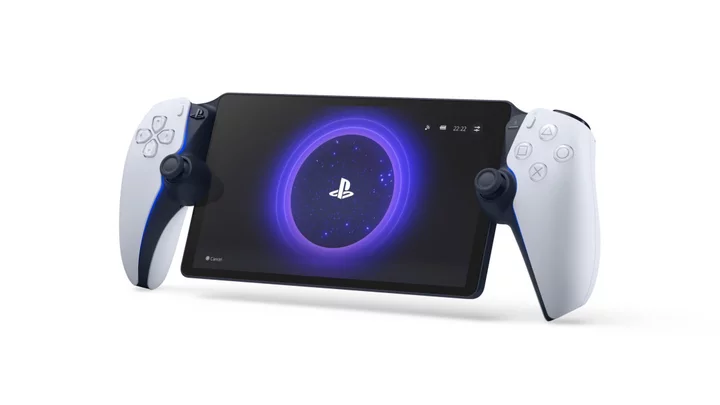Flagship mobile workstations like the Lenovo ThinkPad P16 and the MSI CreatorPro X17 spare no expense, or ounce, to deliver maximum power and expandability for design and rendering, engineering, or data science jobs—they hold up to 128GB of memory and weigh more than 6 pounds. The ThinkPad P1 Gen 6 (starts at $2,119; $3,992.50 as tested) is a bit less beefy at 3.92 pounds with a memory ceiling of 96GB, but still a dynamite laptop for demanding applications. Or, for that matter, game development—it's available with your choice of an Nvidia professional GPU for independent software vendor (ISV) apps or GeForce gaming silicon. This year's ThinkPad P1 is a brilliantly engineered muscle car of a notebook for power-hungry power users, making it a fine alternative to the Editors' Choice award-holding Dell Precision 5680.
Configurations: As You Like It
The ThinkPad P1 (last reviewed here as the Lenovo ThinkPad P1 Gen 4 in March 2022) is a 16-inch workstation akin to the aforementioned Precision 5680 or HP ZBook Studio G9—thinner and lighter than its monster-truck siblings, straddling the line between computer-aided design (CAD) or machine-learning platforms and content-creation laptops. (The P1 seems to have outlived its near twin, the Dell XPS 15-rivaling ThinkPad X1 Extreme.)
(Credit: Molly Flores)The $2,119 P1 Gen 6 base model combines an Intel Core i7-13700H processor, Nvidia's RTX A1000 entry-level professional GPU, and a 1,920-by-1,200-pixel non-touch IPS display. Other models soar as high as $5,099 for a Core i9-13900H CPU with the top-rung RTX 5000 Ada seen in the Precision 5680 we recently reviewed.
For $3,992.50 at B&H, our test unit (model 21FV001KUS) splits the difference with a Core i7-13800H chip (six Performance cores, eight Efficient cores, 20 threads), 32GB of DDR5 memory, a 1TB NVMe solid-state drive, Nvidia's 12GB GeForce RTX 4080, a 3,840-by-2,400-pixel OLED touch screen, and a 5-megapixel webcam with IR face recognition.
(Credit: Molly Flores)As I said, memory is expandable up to 96GB of DDR5 (error-correcting-code memory is reserved for the P16 and P17), with storage up to 8TB (two 4GB SSDs). A 16GB GeForce RTX 4090 GPU is available, as is 4G LTE mobile broadband. Gamers can opt for a 2,560-by-1,600-pixel IPS screen with a speedy 165Hz refresh rate. Windows 11 Pro is standard, as is an AC adapter so huge it hurt when I dropped it on my foot.
The Design: Sturdy as She Goes
Crafted from aluminum and glass-fiber-reinforced plastic, the ThinkPad measures 0.68 by 14.2 by 10 inches, within a few tenths of an inch of the ZBook Studio G9 and Precision 5680, which are slightly lighter and heavier (3.81 and 4.46 pounds), respectively. The laptop has passed MIL-STD 810H torture tests for travel hazards like shock, vibration, and extreme temperatures; you'l notice just a bit of flex if you grasp the screen corners but none if you press the keyboard deck. The webcam and a fingerprint reader built into the power button give you two ways to skip typing passwords with Windows Hello.
(Credit: Molly Flores)If you're content with Wi-Fi 6E instead of wired Ethernet, you'll be satisfied with the P1's ports. On its left side, the power connector is joined by two USB4 Thunderbolt 4 ports, an HDMI output for an external monitor, and an audio jack. Along the right edge are two USB 3.2 Type-A ports, an SD card slot, and a security lock slot.
(Credit: Molly Flores)Using the ThinkPad P1 Gen 6: Lenovo Knows Laptops
Besides faces, the webcam captures 2,560-by-1,440-pixel (16:9 aspect ratio) or 2,592-by-1,944-pixel (4:3 ratio) stills or 30fps videos. Its images are sharp and bright, with decent colors and no detectable noise or static, and it can automatically frame your face or blur your background if you prefer. A tiny sliding shutter preserves your privacy when the camera's not in use.
Speakers flanking the keyboard pump out quite loud and crisp sound, a bit harsh or boomy at top volume but clear at softer settings. You'll hear a small but noticeable amount of bass and you can make out overlapping tracks. Dolby Audio software provides dynamic, movie, music, game, and voice presets and customizable equalizer settings, as well as VoIP optimization.
ThinkPad keyboards are basically as good as laptop typing gets. The P1 is no exception, with bright backlighting and a snappy yet plush typing feel. The Fn and Control keys are in each other's places at bottom left (you can swap them with the supplied Lenovo Vantage software if you can't adjust). The layout is otherwise faultless, with dedicated Home, End, Page Up, and Page Down keys along with top-row system shortcuts including keys to place and end Microsoft Teams calls.
(Credit: Molly Flores)Another ThinkPad tradition is dual pointing devices, a midsized touchpad plus the TrackPoint mini joystick embedded mid-keyboard with three mouse buttons below the space bar. (The middle button is handy for many CAD and other ISV programs.) The pad glides smoothly and has a responsive click, while the TrackPoint combines speed and precision.
X-Rite Color Assistant software lets you fine-tune the 4K OLED display for sRGB, Adobe RGB, DCI-P3, Rec.709 (HDTV), DICOM (medical imaging), or default color palettes. Whichever you choose it's a joy to behold, with rich, vivid colors and sky-high contrast. White backgrounds are pure as the driven snow, blacks are India ink, and viewing angles are wide (though the touch glass catches a few reflections). Details are razor-sharp, with no pixelation around the edges of letters. Brightness is bountiful, and the screen tilts as far back as you like. Notepad memos and web pages look fabulous, while photos and engineering drawings pop like posters.
(Credit: Molly Flores)Testing the Lenovo ThinkPad P1 Gen 6: Buckle Up and Hang On
For our benchmark charts, we pitted the ThinkPad P1 Gen 6 against four other mighty mobile workstations: two all-out performers in the MSI CreatorPro X17 and Lenovo ThinkPad P16 Gen 1 (we haven't tested the Gen 2 model yet), and two direct competitors in the relatively svelte Dell Precision 5680 and HP ZBook Studio G9.
The P1 is the processing underdog as the only Core i7 against Core i9 systems. The Nvidia RTX 5000 Ada in the Precision and RTX A5500 in the ThinkPad P16 and CreatorPro are the peak of the graphics giant's newest and previous professional generations respectively.
Productivity Tests
We run the same general productivity benchmarks across both mobile and desktop systems. Our first test is UL's PCMark 10, which simulates a variety of real-world productivity and office workflows to measure overall system performance and also includes a storage subtest for the primary drive.
Our other three benchmarks focus on the CPU, using all available cores and threads, to rate a PC's suitability for processor-intensive workloads. Maxon's Cinebench R23 uses that company's Cinema 4D engine to render a complex scene, while Geekbench 5.4 Pro from Primate Labs simulates popular apps ranging from PDF rendering and speech recognition to machine learning. Finally, we use the open-source video transcoder HandBrake 1.4 to convert a 12-minute video clip from 4K to 1080p resolution (lower times are better).
Finally, we run PugetBench for Photoshop by workstation maker Puget Systems, which uses the Creative Cloud version 22 of Adobe's famous image editor to rate a PC's performance for content creation and multimedia applications. It's an automated extension that executes a variety of general and GPU-accelerated Photoshop tasks ranging from opening, rotating, resizing, and saving an image to applying masks, gradient fills, and filters.
We consider 4,000 points in PCMark 10 to indicate excellent productivity for everyday apps, so all these workstations are outrageous overkill for the likes of Word and Excel. They all shone in our CPU and Photoshop tests as well—it's no dishonor that the ThinkPad P1's Core i7 was mostly half a step behind the Core i9 processors, though the MSI earned points for overachieving.
Graphics Tests
We test Windows PCs' graphics with two DirectX 12 gaming simulations from UL's 3DMark, Night Raid (more modest, suitable for laptops with integrated graphics) and Time Spy (more demanding, suitable for gaming rigs with discrete GPUs).
Additionally, we run two tests from the cross-platform GPU benchmark GFXBench 5, which stresses both low-level routines like texturing and high-level, game-like image rendering. The 1440p Aztec Ruins and 1080p Car Chase tests, rendered offscreen to accommodate different display resolutions, exercise graphics and compute shaders using the OpenGL programming interface and hardware tessellation respectively. The more frames per second (fps), the better.
The P1 and Precision jockeyed for the win here, but these quasi-gaming benchmarks aren't very relevant for mobile workstations. All are certainly capable of playing the latest games after hours, but they're not meant to; CAD, CGI rendering, and virtual reality are their visual preoccupations.
Workstation-Specific Tests
Similar to its Photoshop counterpart, PugetBench for Adobe Premiere Pro 15 is an automated extension that puts a PC through a full complement of video editing tasks. We also run Blender, an open-source 3D suite for modeling, animation, simulation, and compositing. We record the time it takes for its built-in Cycles path tracer to render two photo-realistic scenes of BMW cars, one using the system's CPU and one the GPU (lower times are better). BMW artist Mike Pan has said he considers the scenes too fast for rigorous testing, but they're a popular benchmark.
Perhaps our most important workstation test, SPECviewperf 2020, renders, rotates, and zooms in and out of solid and wireframe models using viewsets from popular ISV apps. We run the 1080p resolution tests based on PTC's Creo CAD platform; Autodesk's Maya modeling and simulation software for film, TV, and games; and Dassault Systemes' SolidWorks 3D rendering package. Results are in frames per second.
The five contenders were closely matched in Adobe Premiere video editing and Blender 3D modeling, though the CreatorPro X17 again put on a show of strength. In the vital SPECviewperf benchmarks, the ThinkPad P1 and Precision 5680 swapped narrow wins in SolidWorks and Maya, but the Dell prevailed with a wider margin in Creo.
Battery and Display Tests
We test laptop battery life by playing a locally stored 720p video file (the open-source Blender movie Tears of Steel) with display brightness at 50% and audio volume at 100%. We make sure the battery is fully charged before the test, with Wi-Fi and keyboard backlighting turned off.
To gauge display quality, we also use a Datacolor SpyderX Elite monitor calibration sensor and software to measure a laptop screen's color saturation—what percentage of the sRGB, Adobe RGB, and DCI-P3 color gamuts or palettes the display can show—and its 50% and peak brightness in nits (candelas per square meter).
The P1's nearly nine-hour runtime is fabulous battery life for this category, though the Dell's 13 hours is downright exceptional. All five systems' screens deliver drool-worthy, vivid color and ample brightness. We like to see more than 400 or 500 nits of brightness from an IPS mobile workstation but OLED's sky-high contrast makes anything more than 350 nits perfectly fine.
Verdict: A Deeply Honorable Mention
Lenovo's ThinkPad P16 is currently our favorite kaiju-class mobile workstation, and the ThinkPad P1 Gen 6 is a superb entry in the slightly tamer, much-more-portable segment. It doesn't quite steal the Dell Precision 5680's Editors' Choice award because of the latter's longer battery life and spectacularly powerful Nvidia RTX 5000 Ada professional GPU (a P1 option; our test unit was just differently equipped), but it's a winning laptop for the toughest work tasks.









